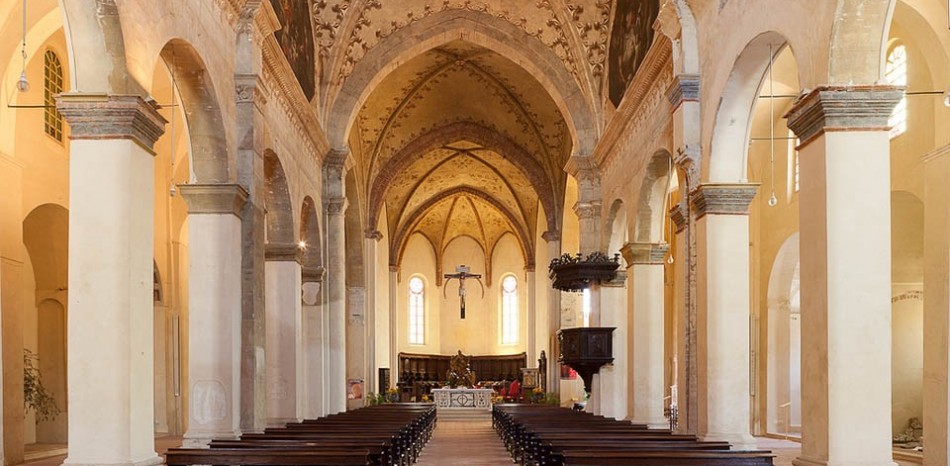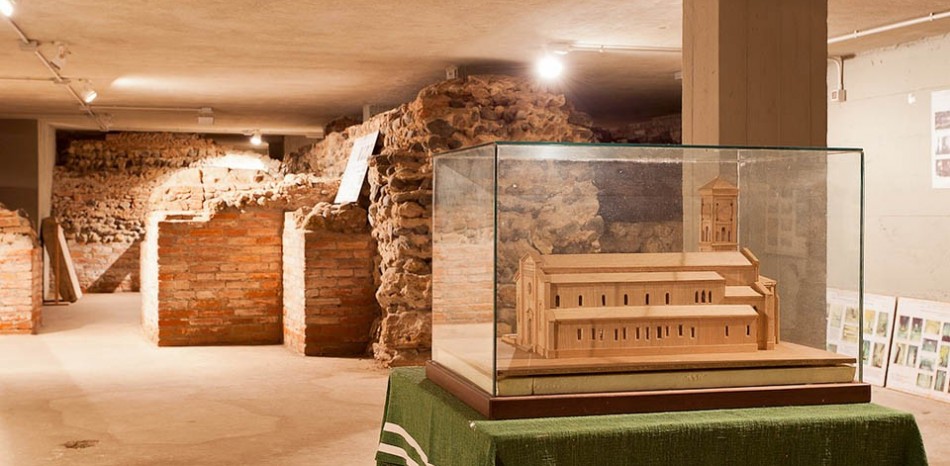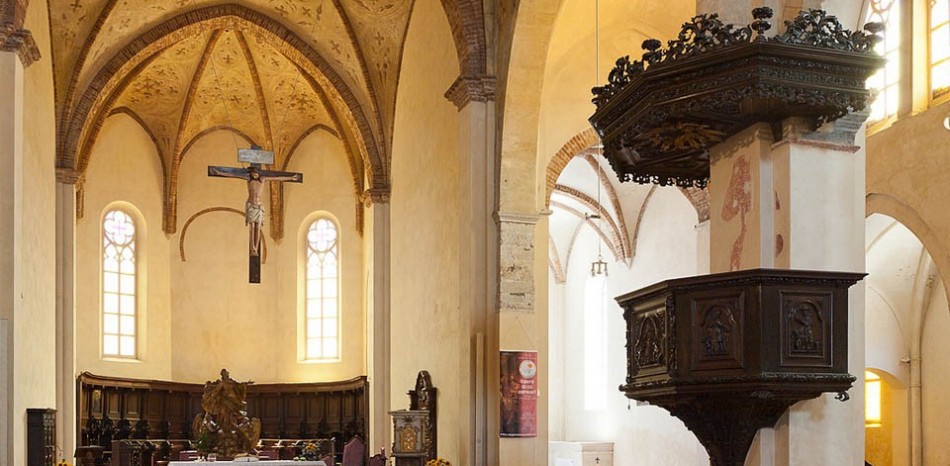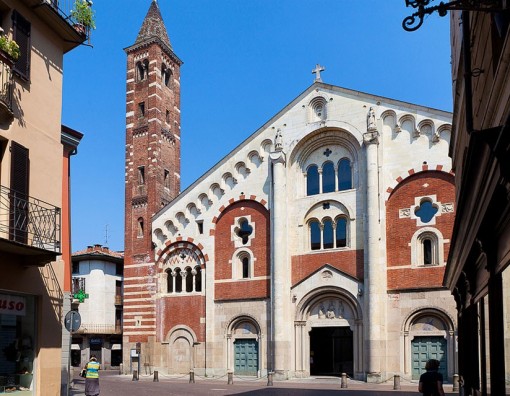Dear Traveller, If passing through Alessandria, I would suggest taking half a day for a stroll through the Medieval Ages.
Alexandria was a major protagonist of this era. A short tour through the Alexandrian Middle Ages might seem impossible considering the current appearance of the city, however recent discoveries have restored entire remains of this period, poised between communal liberties and stately expansion projects.
Our tour through medieval Alessandria starts at the (Art gallery ) (via Machiavelli, corner of Via Parma) with a visit to the exquisite frescoes of the “cycle of Arthur” (late fourteenth century), an exceptional example of "Lancelot’s chambers," one of those rooms decorated with stories of the adventures and the lovers of the hero.
A few hundred meters away you can visit the (former church of San Francesco ), transformed and sub-divided by Carlo Alberto into a military hospital (Via XXIV Maggio). Despite the havoc of the nineteenth century, recent restoration has brought to light the polychrome decoration of that time, with ornaments of great beauty related to models of the early fourteenth century with an expression of the Lombard-Alexandrian culture, their characters inspired by the total sobriety of that time.
The main surprise, however, concerns the old town hall, the so-called broletto (or palatium vetus), which resurfaced a few years ago to its original form during the restoration works of the new headquarters of the Foundation (Cassa di Risparmio di Alessandria ) (piazza della Libertà). Various original decorations, frescoes of the three and four hundreds, surprising for their freshness and sharpness, and the hall itself where meetings were held by mayors, governors, Visconti and the Sforza, and then by even the Spanish and the Savoy, now welcoming us to the first floor of the building and giving us an idea of the splendor of those times and how much history has passed through them.
You can round the trip off by visiting two churches. (The Cathedral of Saint Peter ), which although reconstructed in the Eighteen hundreds to its former neoclassical style, hides many treasures of art which originate from the medieval cathedral, destroyed by Napoleon Bonaparte in 1803. The church of Santa Maria di Castello, which is also now in the style of late XVI century, comprises an archaeological site with the remains of two ancient churches of the eighth and the tenth or eleventh century (contact the parish for the visit to this).
Roberto Livraghi









